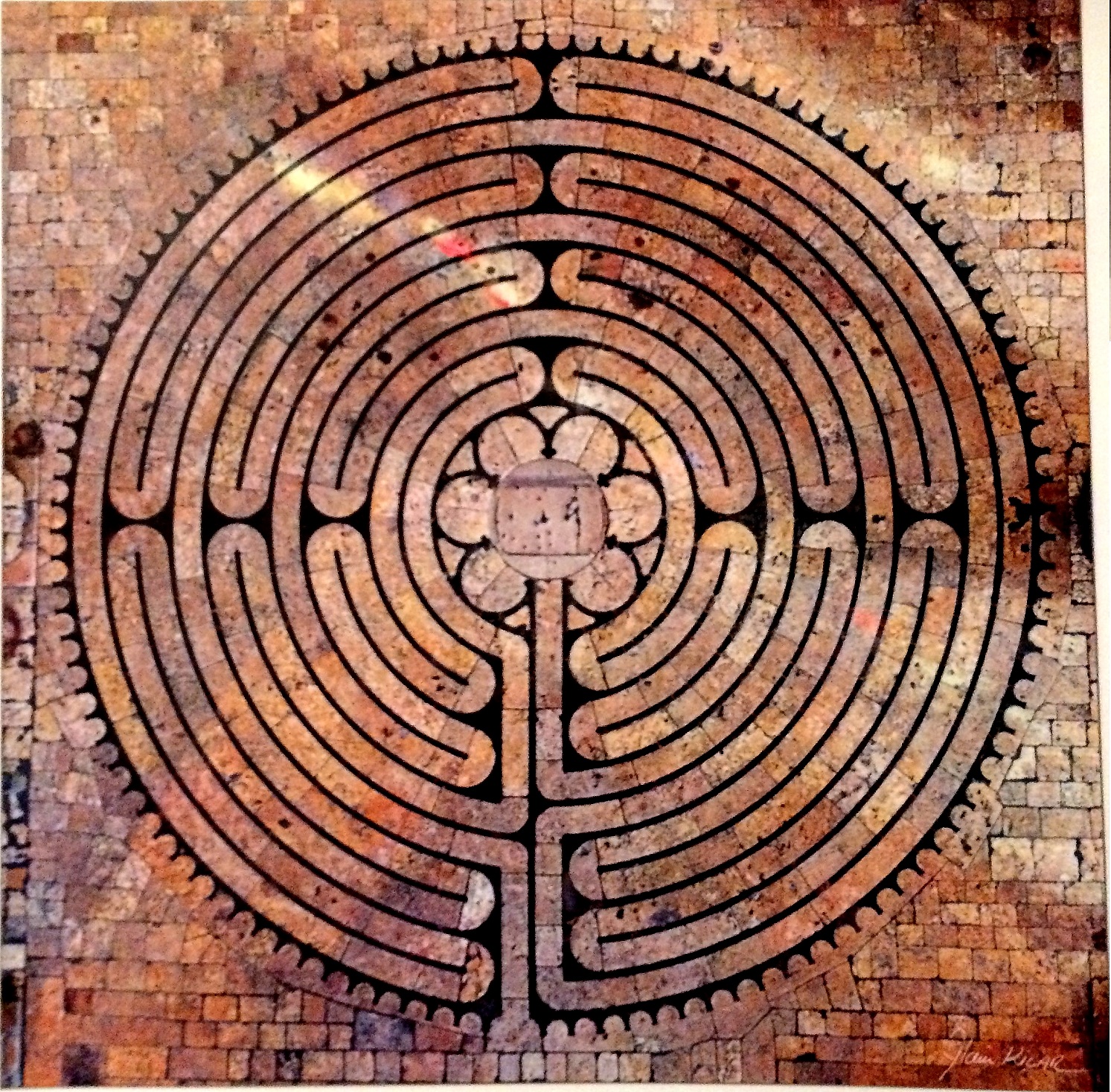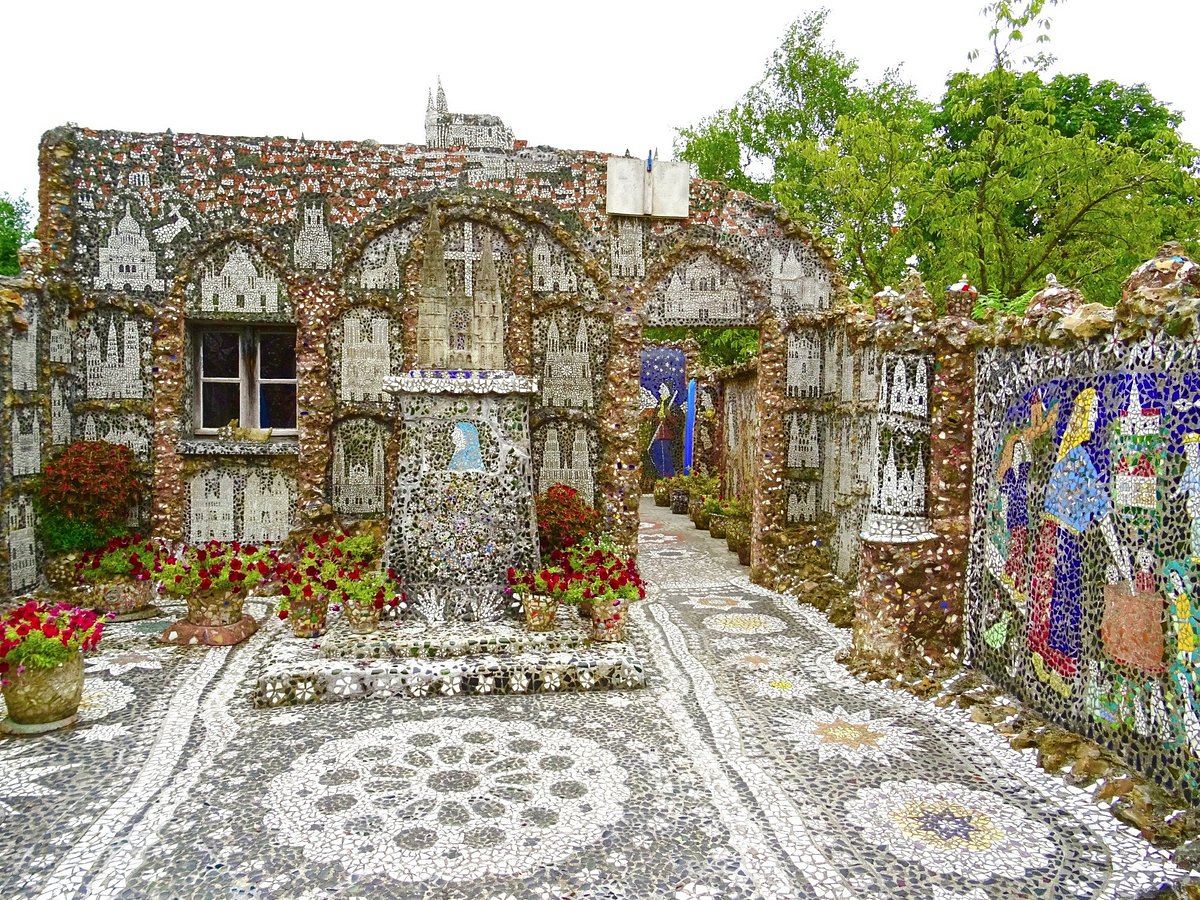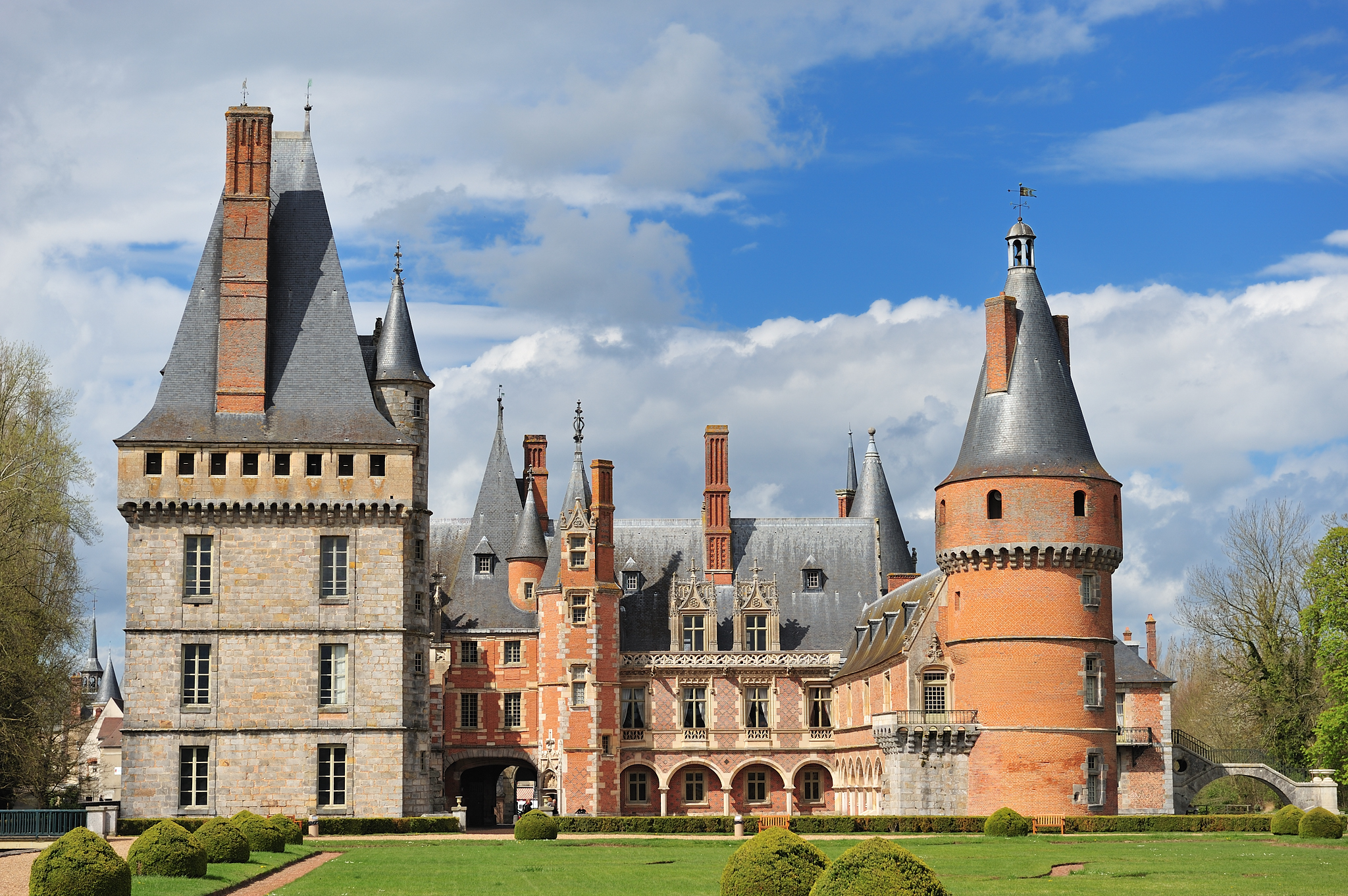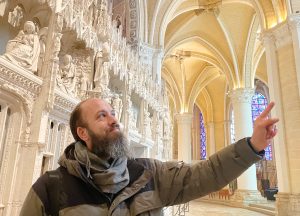During the winter season, we try to use as many opportunities as we can to go learn new tours. This week, we had the pleasure of going to Chartres, a city located 56 miles southwest from Paris. It is famous worldwide for its cathedral. The cathedral of Chartres was built for the most part between 1194 and 1221. Compared to Notre-Dame Cathedral in Paris, whose construction started in 1163, Chartes is a bit later. However, construction only lasted about 30 years – as opposed to the 187 years it took to finish Notre-Dame Cathedral !
And just like Notre-Dame Cathedral, there was a fire… but back in 1836 ! And for the same reasons : there were renovations going on in the attic of the cathedral, meaning the space between the vault and the roof. It completely destroyed the ‘forest’ of the cathedral, i.e. the network of wooden beams that supported the roof above the vault. Instead of wooden beams, the architect decided to built a new metal frame covered with copper, built in record time, from 1837 to 1841.
Outside of the fire of 1836, the cathedral of Chartres survived the wars between the Catholics and Protestants in the 1500s, as well as the French Revolution. The government protected the stained-glass windowsby taking them down and hiding them away from the cathedral in both 1918 and 1939 ; as such, they didn’t suffer any damages. Finally, in 1979, the cathedral of Chartres was the first cathedral to appear on UNESCO’s World Heritage List. Here’s a quick overview of what makes Chartres special.

Chartres Blue
Like any church built in France in the 1200s, the architecture of the cathedral of Chartres relies on the principles of Gothic-style architecture. A network of rib vaults on the inside, which direct the weight of the vault to the corners where columns could support it, as well as flying buttresses on the outside of the building, support the walls. This allowed the walls to be higher and thinner. More importantly, it was now possible to insert larger stained-glass windows, filling the building with light.
The stained-glass window of the Chartres Cathedral has a surface area of around 27,000 square feet (or 2,600 square meters), which is a record for a religious building in France. That makes it the only cathedral in the world to have preserved this much original stained glass. That is why the colors of the original stained-glass windows are so famous, especially the ‘blue of Chartres’, a light blue found nowhere else.
Why ? Because of the changes in the techniques used to make the stained-glass. In the 1100s, glassmakers made blue stained-glass by using a mix of cobalt blue, marine plant ash, copper, iron and antimony (an opacifier). However, with the new Gothic-style architecture, stained-glass windows are now larger, making this technique too expensive. Instead, wood ash replaced marine plant ash, and manganese replaced cobalt ; this new composition made the blue color darker than before.

The labyrinth
The Cathedral of Chartres’ labyrinth dates back to around 1200. It is visible in the paving. In total, its path is around 85 meters (or 850 feet) long. Labyrinths used to be very present in churches and cathedrals in the Middle Ages, the one of Chartres is one of the few that remains today. Its use was both as a path of penance that people walked on their knees, as well as a metaphor for a symbolic walk towards the New Jerusalem.
It was also an opportunity for something that might surprise you : to dance ! Indeed, in the Middle Ages, people would dance in the naves of churches or cathedrals during great events, especially during Easter celebrations. There are not a lot of sources on how people danced in Chartres, but one document does mention a dance called chorea, a spontaneous and simple dance that only involved following a simple rythm.
If you want to re-create that dance, or just to follow the path of the labyrinth (not necessarily on your knees nowadays), be sure to go to Chartres on a Friday between the first Friday of Lent to the Last Friday of October (except on Good Friday). The rest of the time, the church puts chairs on the labyrinth, which is still partially visible but not accessible. If you stand in it, and look back to the entrance of the cathedral, you might notice that the center of the labyrinth corresponds to the center of the rose-window.

Notable events
Only one coronation happened in the cathedral, on February 27, 1594 : Henri IV, first of the Bourbon dynasty, became king of France. The reason why only he had his coronation ceremony there, and not in the customary cathedral of Reims, is because of the context : Paris and Reims are occupied by the Catholic League, and therefore inaccessible to Henri IV, a newly-converted Catholic that grew up Protestant. Henri IV picked Chartres as a replacement because of the prestige of the cathedral.
350 years later, on August 16, 1944, Col. WelBorn B. Griffith saved the cathedral, making him the first World War II “Monuments Man”. On his own initiative, he entered the cathedral, that the US artillery wanted to destroy in order to take out German forces. Griffith searched the cathedral and climbed the bell tower. He found no Germans, and was able to rescind the previously issued order to shell the monument. His courage preserved the cathedral. He unfortunately died later that day.
In the stained-glass window located on the right of the southern transept, dedicated to the life of Apollinaris of Ravenna and to the hierarchy of angels, a metal plate pierced with a circular hole sealed with transparent glass replaces the traditional glass part. On the floor, a very specific nail has been placed in such a way that every year, on the summer solstice, a luminous circle appears on his head when the sun is at its zenith, as shown on the picture above.

What to see in the city of Chartres
What do Dior, Givenchy and Guerlain have in common ? They are all part of the Cosmetic Valley, a cosmetic science of beauty and well-being business cluster whose headquarters are located right next to the Cathedral. As such, you can visit L’Esprit du Parfum, where you will find a discovery workshop of odors and raw materials used to create different fragrances. You will also be able to discover Autrica, a perfume made by the city of Chartres.
The rest of the town is also worth exploring, especially along the banks of the Eure River. The Eure crosses the old town, spanned by numerous bridges dating from the Middle Ages. All along the river, the names of the streets evoke the trades using water. One of the houses of Chartres has to be mentioned : Picassiette House, an extraordinary building whose decor consists of earthenware and glass mosaics cast in cement, entirely decorated by its owner, Mr. Raymond Isidore, from pieces of broken crockery. You can see a picture of it above.
Finally, there are some events that can’t be missed if you are in area. The most important one is “Chartres en Lumières”, a light-show that, through its spectacular night-time itinerary, reveals 29 monuments and unmissable sites lit up and set to music. You will probably have to stay overnight to see it though, as the light show starts only after the sun has set down…

Tips & advice
Chartres is near Paris and the Loire Valley. It’s 88km away from Paris, meaning about an hour and 15 minutes with normal traffic conditions. Another way to get there is by train : every day, 33 trains link Chartres to the Paris-Montparnasse train station ; the trip takes about an hour. If you want to explore the area around Chartres, and don’t have a car, there are numerous regional train lines at your disposal. The train station is located in the center of Chartres, a couple of minutes away from the cathedral.
If you have a sweet tooth, there is one food specialty that Chartres is known for. The first one is called the Mentchikoff, a delicious chocolate, made with praline and butter, and coated in a fine layer of meringue.
It was Leon Daumesnil, a confectioner from Chartres, later set up in Boulogne-sur-Mer, who had the idea in 1893, at the time of the Franco-Russian Alliance, hence the -imaginary- Russian-sounding name. Chartres is also well known for its macaroons.
Finally, whether you are travelling by train or with a car, try and make time to visit the Maintenon Castle, located just 20kms away from Chartres. It is named after its most famous owner, Françoise d’Aubigné, known as Madame de Maintenon, one of the mistresses of Louis XIV (the king that built Versailles), who went from being the governess of his illegitimate children to his secret wife… The picture above gives you an idea of her wealth !
Want to go there with us ? Book your tour here !
Article written by Lucien







